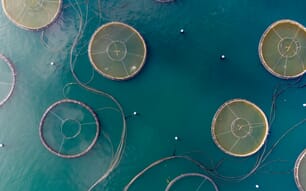The SSPO’s latest fish health and mortality data report reveals that 52.8 per cent of the salmon at Wester Ross’s Ardessie Farm Site A and 41.9 per cent at the Ardessie Farm Site B – bot in Little Loch Broom – were wiped out following acute gill problems caused by a severe plankton challenge in August.

“This has been a catastrophic event for Wester Ross, in over 40 years of salmon farming. Our dedicated farmers have never had to manage such severe mortality in a very short period of time,” said Gilpin Bradley, managing director of Scotland's oldest independent salmon producer.
“This event was soul-destroying for all our farmers and staff who had been caring of these salmon for over 10 months at the time of the event. Fortunately, the remaining salmon have now been fully recovered and are growing well.”
“Year 2018 was a record year for seawater temperatures, causing more plankton issues and reduced oxygen levels at sea. Increasing seawater temperatures during summer months due to global warming will continue to be a major challenge for all sustainable seafood farmers around the world.”
The incident marred an otherwise unremarkable;le month for the Scottish salmon sector, which recorded an average mortality rate of only 1.55 per cent. Other than the Wester Ross incident, the main causes cited were cardio-myopathy syndrome (CMS), anaemia and issues related to gill health.
Monthly mortality rates have been between 0.54 and 1.55 percent so far this year.




